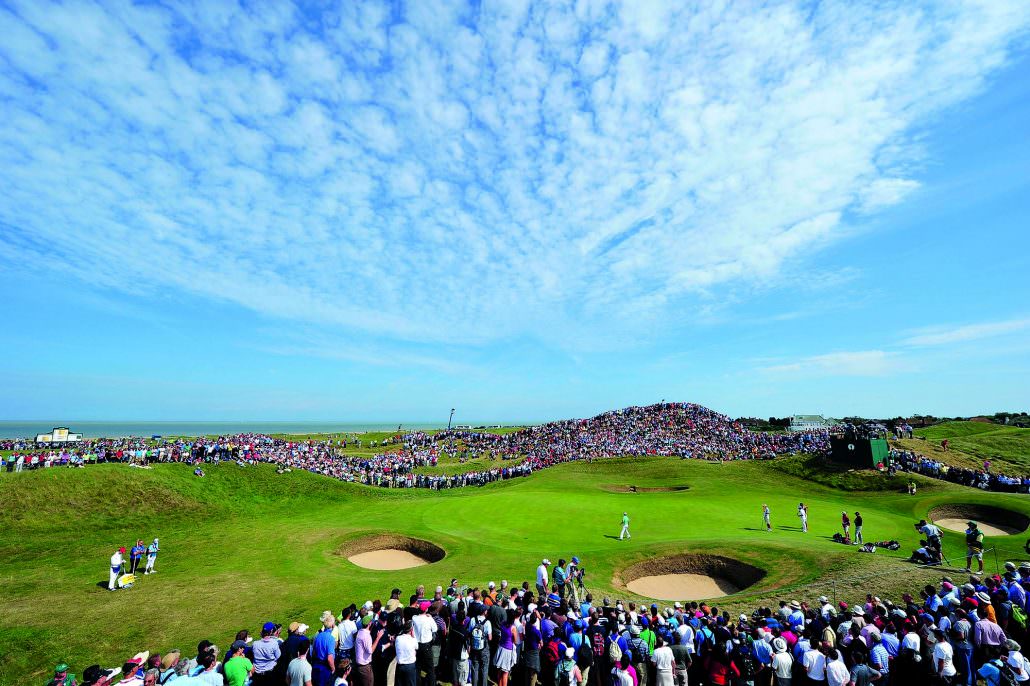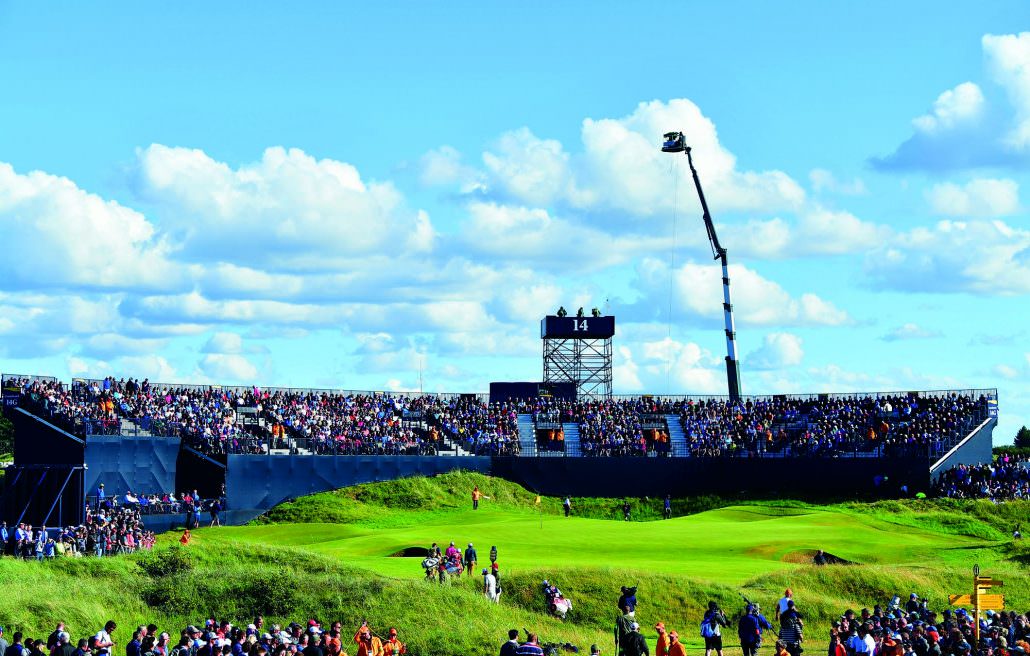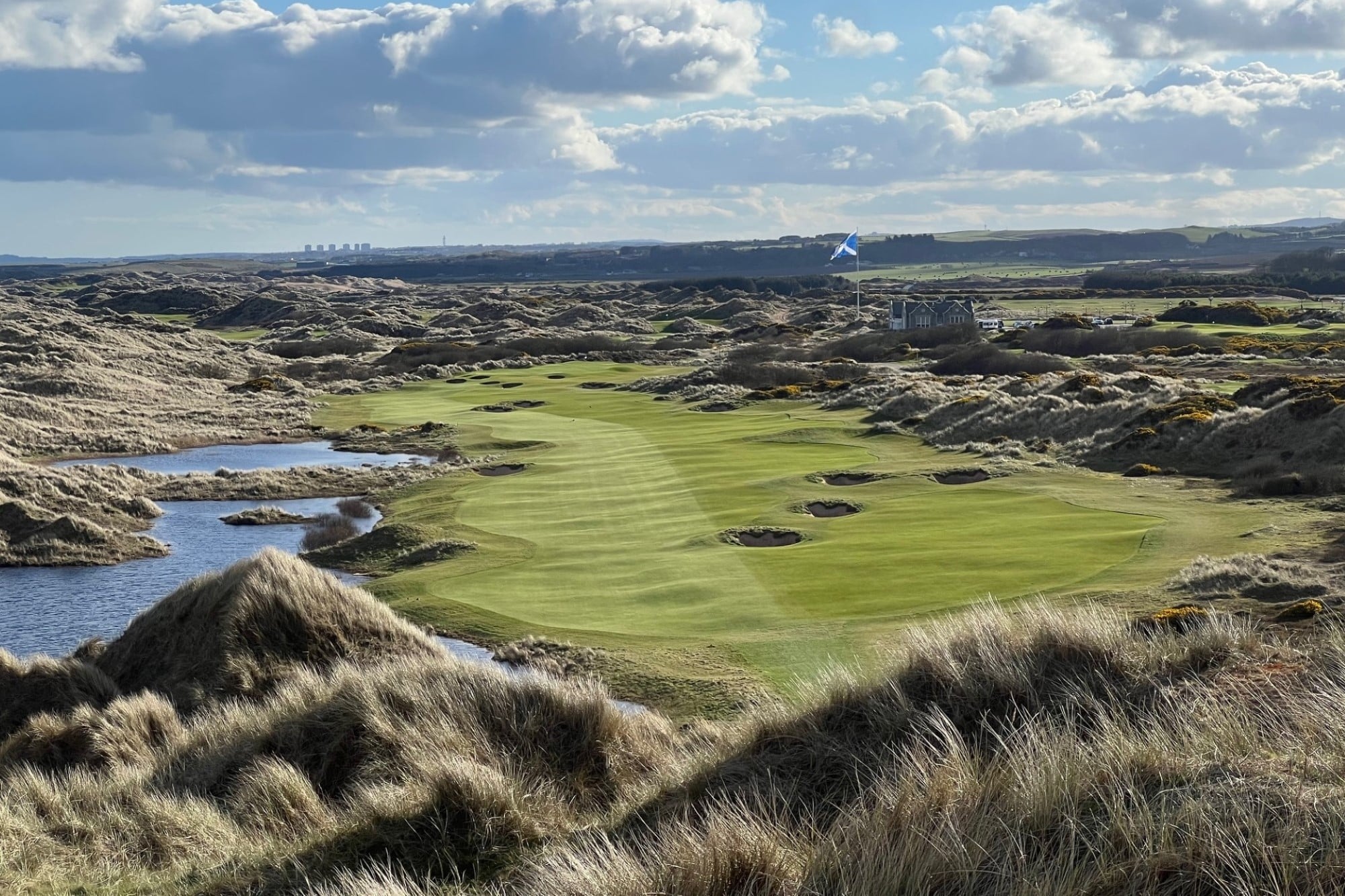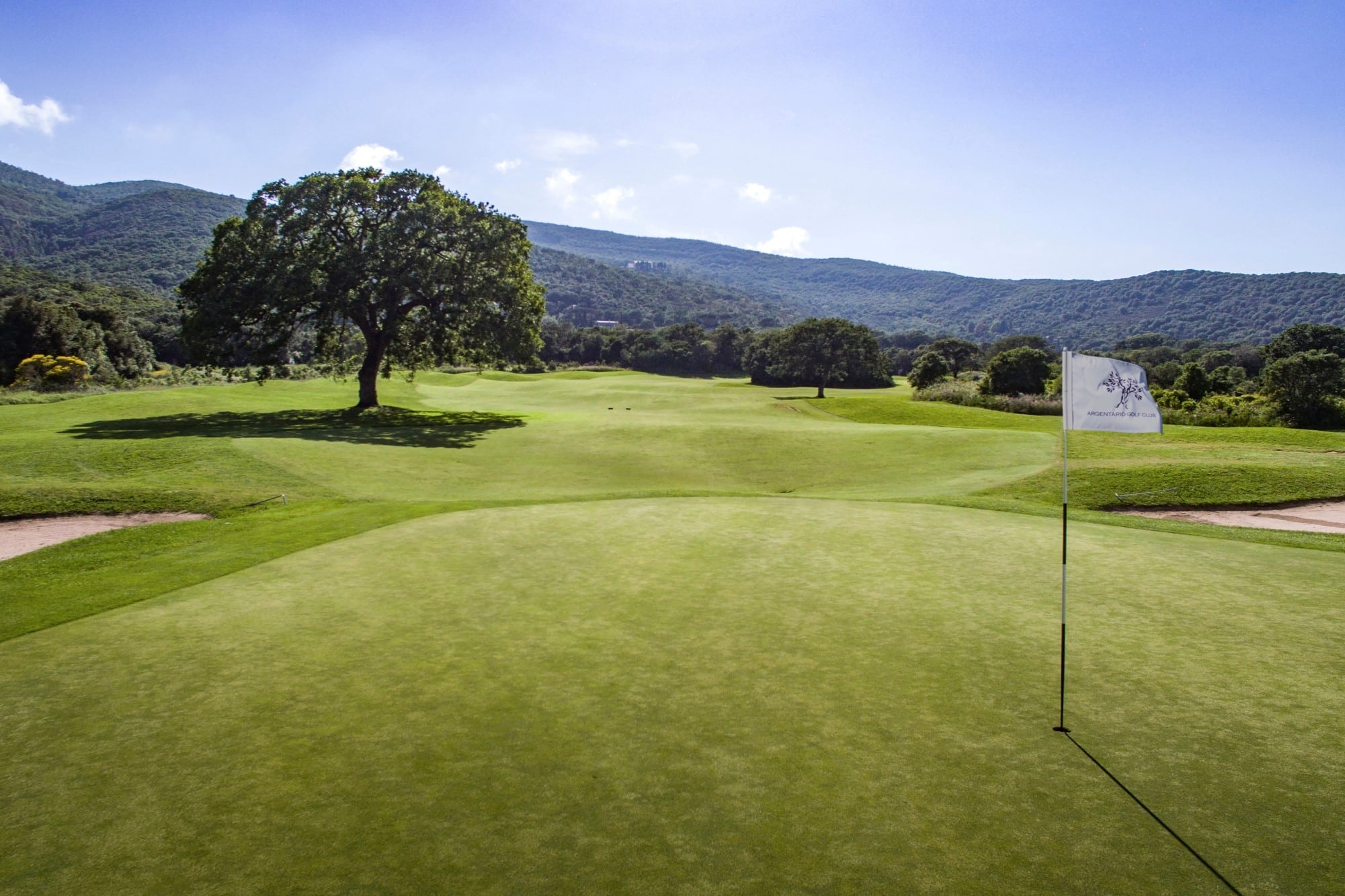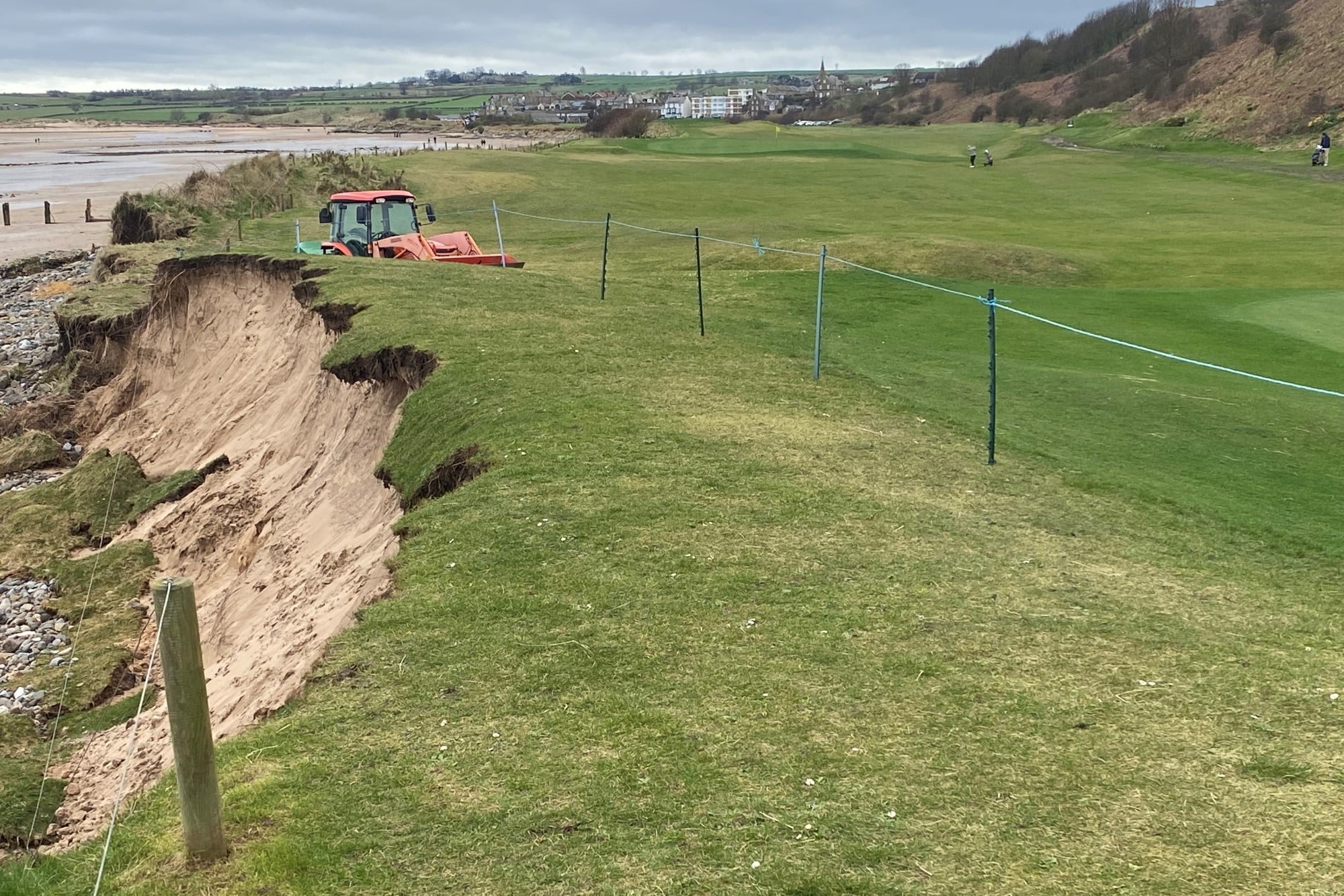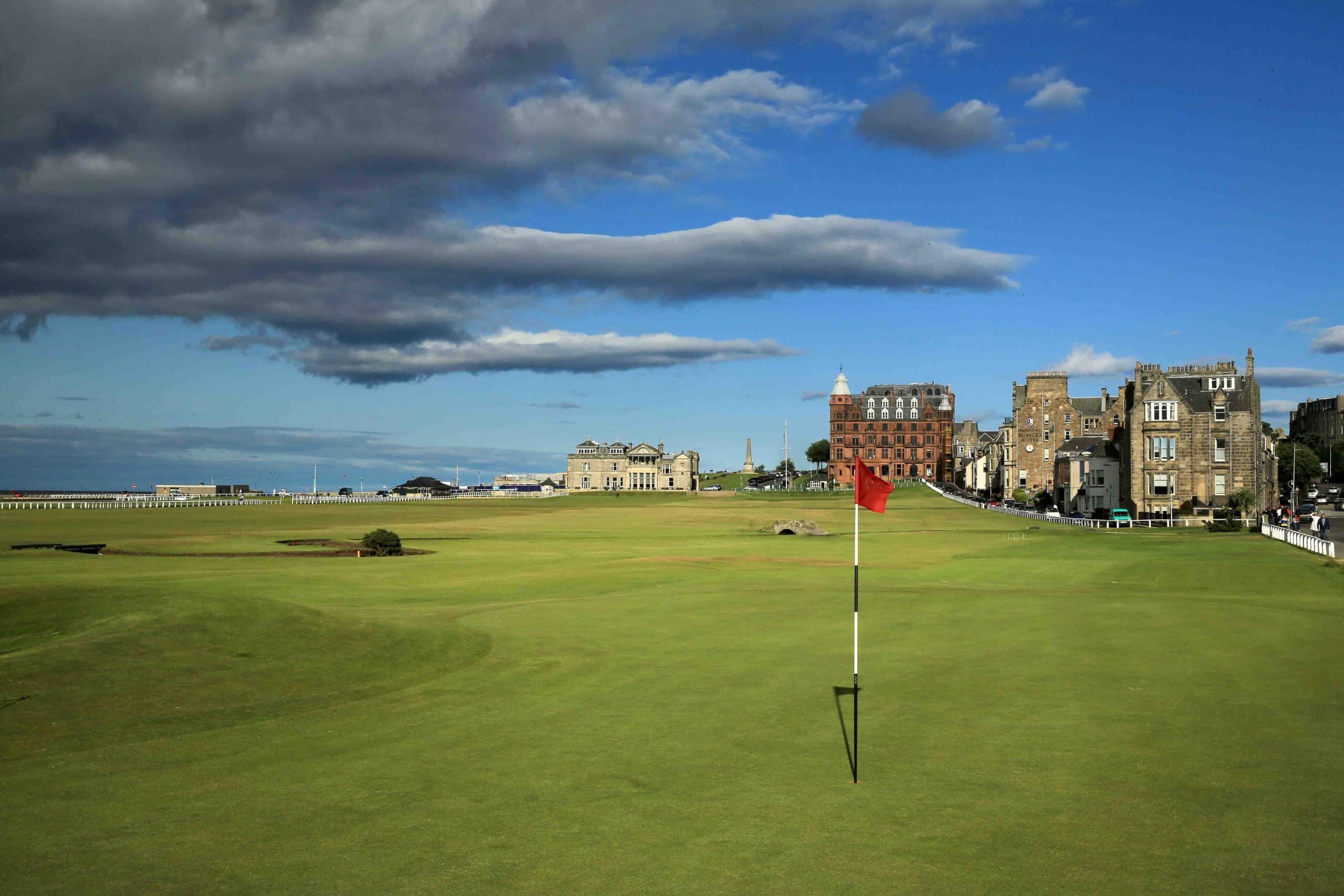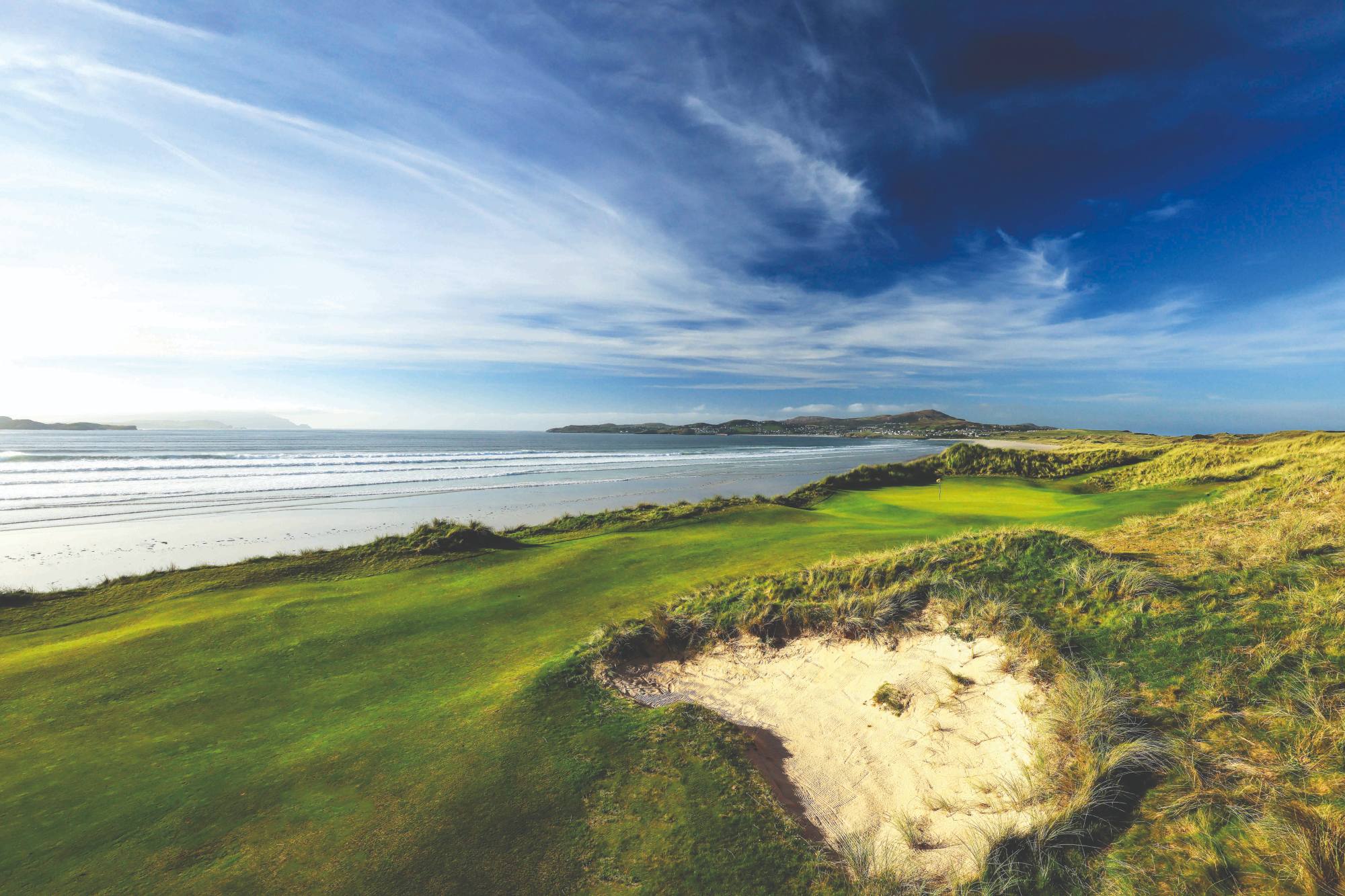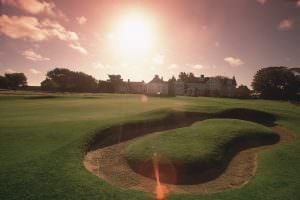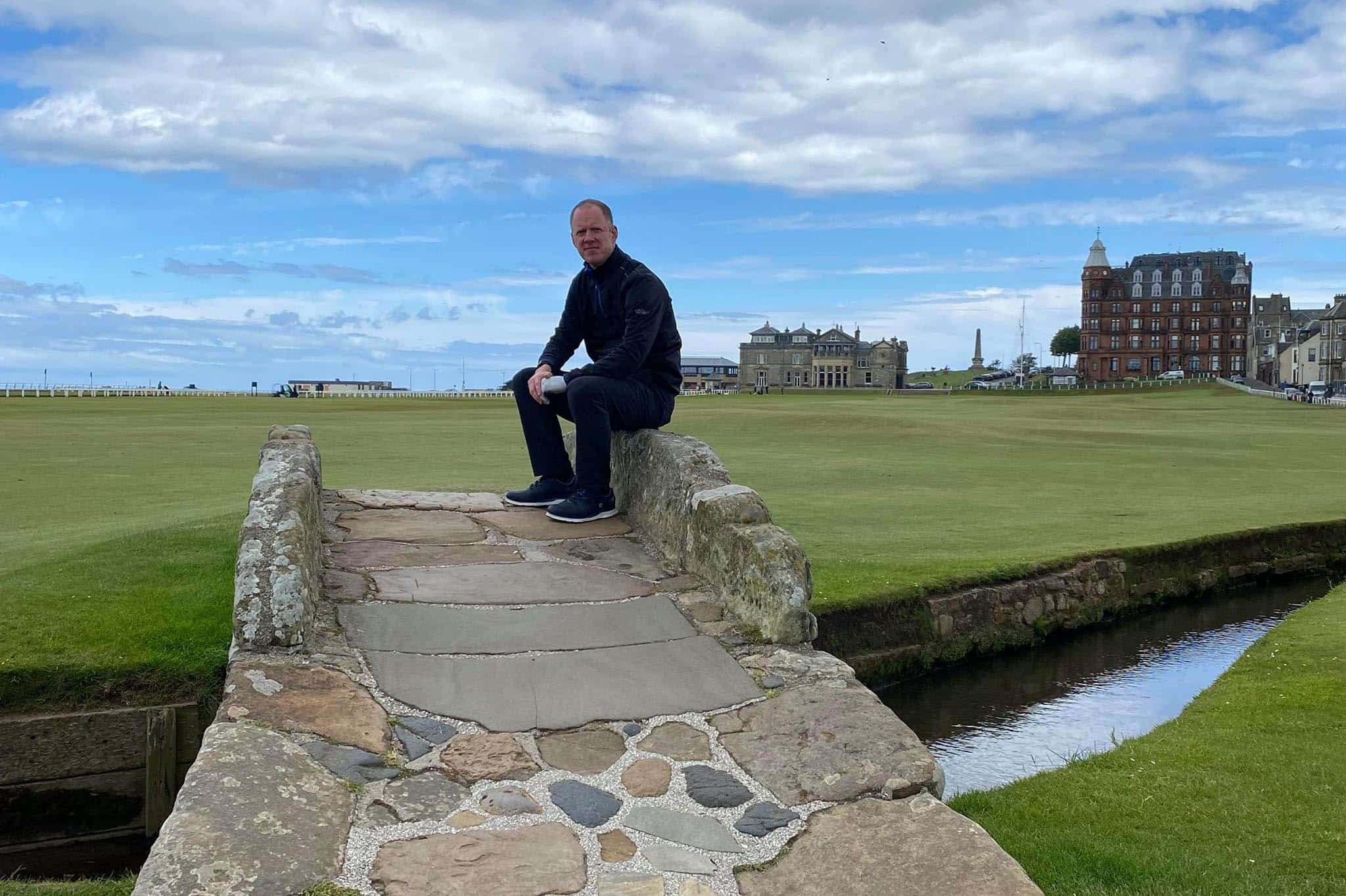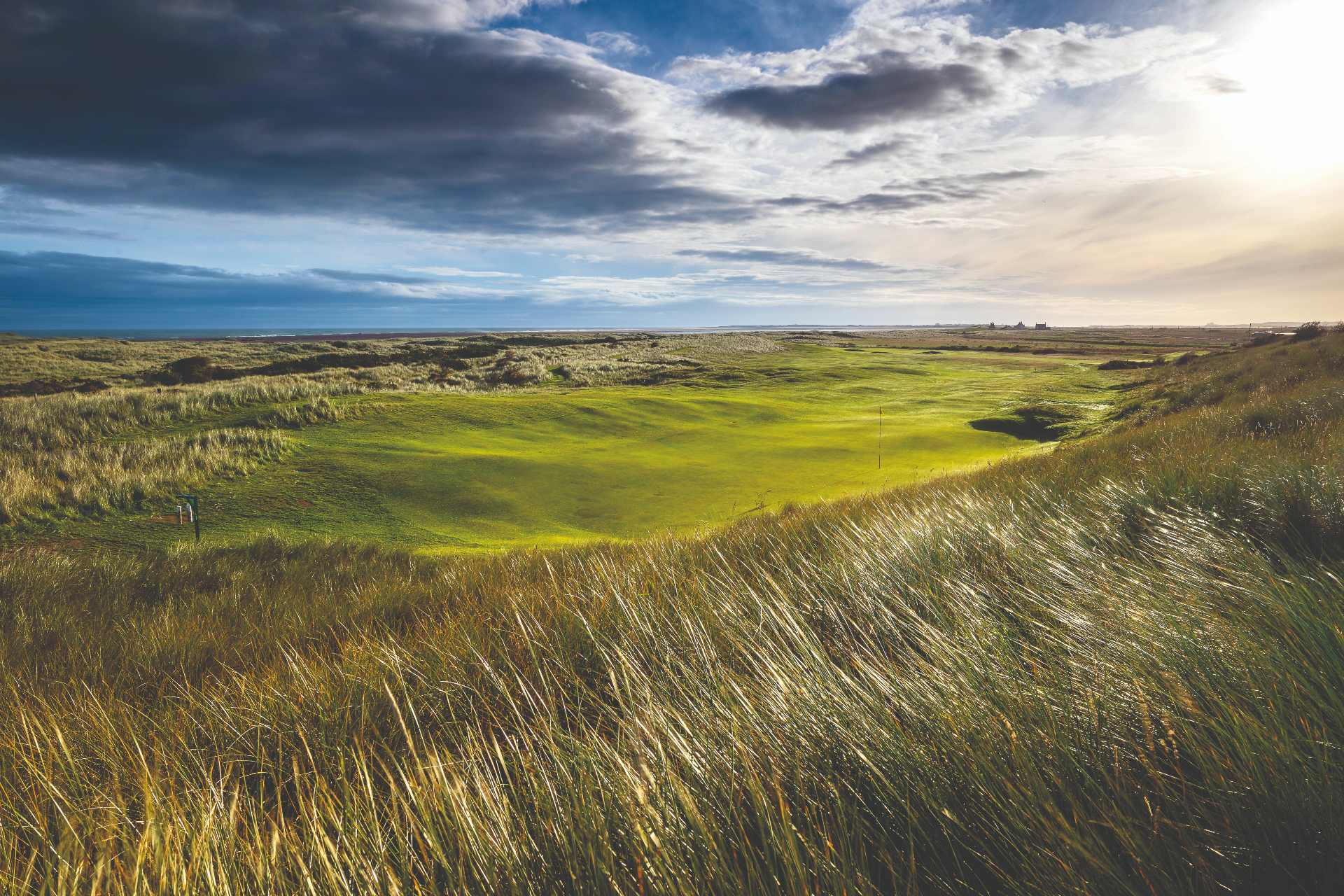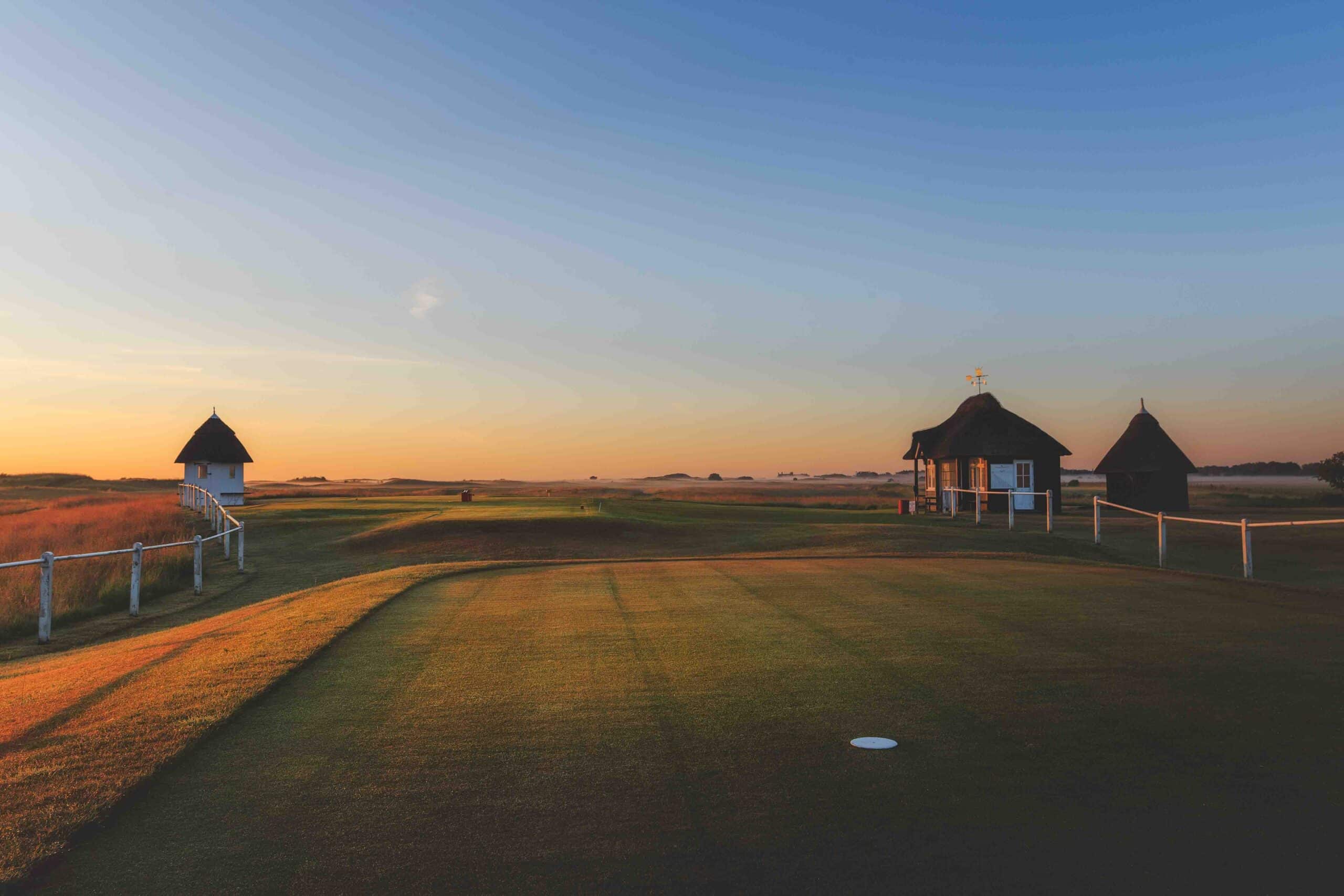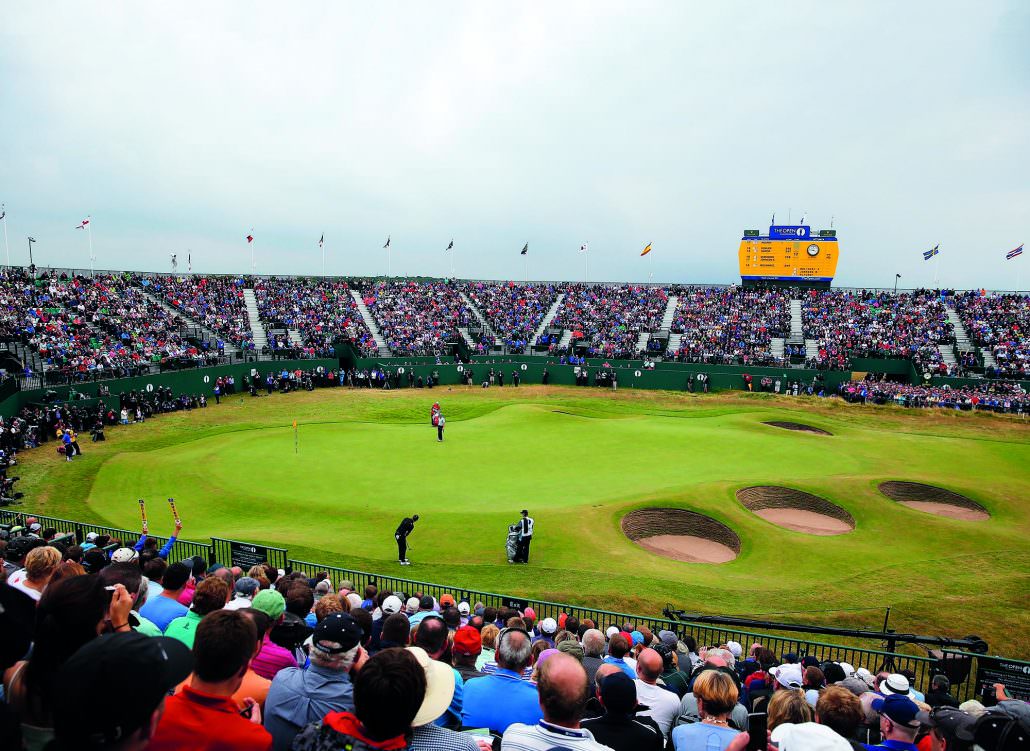
England’s Open Championship Venues
Royal Lytham & St Annes
Opens hosted: 11
Years/champions: 1926 Bobby Jones, 1952 Bobby Locke, 1958 Peter Thomson, 1963 Bob Charles, 1969 Tony Jacklin, 1974 Gary Player, 1979 Seve Ballesteros 1988 Seve Ballesteros, 1996 Tom Lehman, 2001 David Duval, 2012 Ernie Els
James Heath won the 2004 Lytham Trophy, finishing on an 18-under-par aggregate of 266, eight better than Ross Fisher and 11 clear of Gary Wolstenholme. He beat Tom Lehman’s Open Championship record by five strokes.
“The course and clubhouse are awesome and, for me, as a stand-alone tournament it was the best,” says Heath.
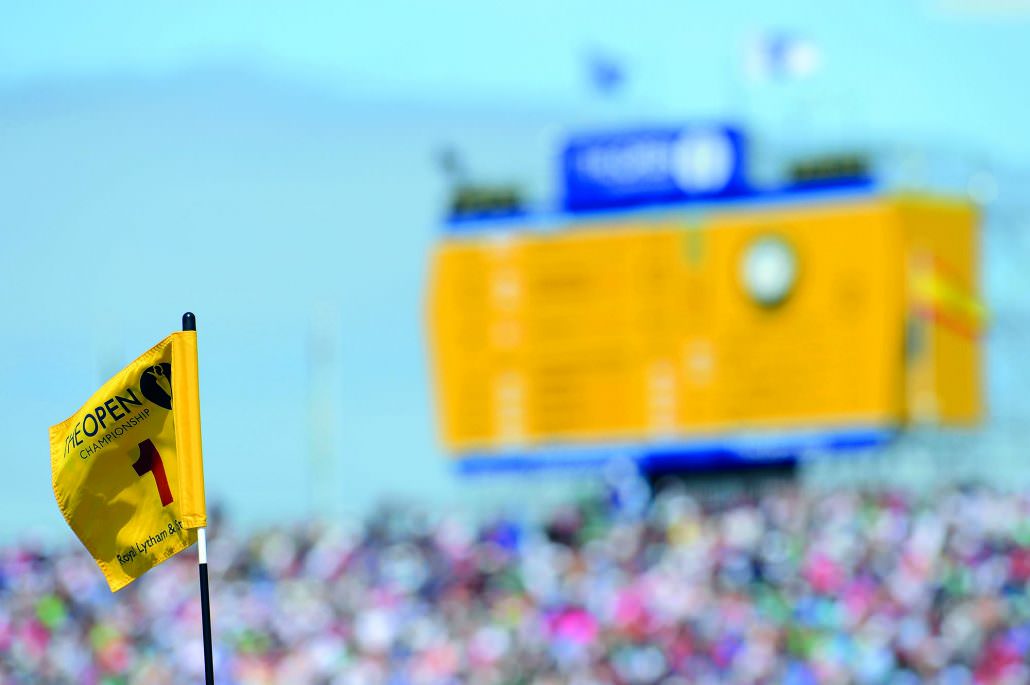
“I missed 2003 as I was at college but played in ‘02 and I was too inexperienced to play the course. I wasn’t the same sort of player I was in 2004 and it completely beat me up.
“Rory McIlroy rang me in 2006 asking how to play the course and I just remember telling him to keep it left, make loads of pars for the first four and last four and try to make some birdies in the middle.
“Back then you had par 5s at 6 and 7 and then you had short irons into 8, 9 and 10. After that it seemed like there was just this succession of long par 4s.
“For some reason, I had no limitations and was really settled. I shot 66-65 in the last two rounds. I was three behind Ross Fisher going into the last two rounds so we had a little day to ourselves. He played great and hit so many putts that just didn’t go in. When you are on the other side of that you feed off it. It was a bit of a matchplay format.”
Luke Donald, the five-time Ryder Cup player, is now a course designer in his own right. Ba Na Hills in Danang, Vietnam, was voted ‘World’s Best New Golf Course’ at the World Golf Awards.
“Of the links courses in England, my favourite is probably Royal Lytham & St Annes followed closely by Hillside. “Of the Open venues I have played, Sandwich is characterised by its severely undulating fairways and reasonably undulating fairways, while Hoylake and Lytham more so by their strategic bunkering and relatively flat putting surfaces. Like most links courses though, their best defence is the weather conditions,” he said.
Architect Martin Ebert adds: “Royal Lytham & St Annes has, perhaps, provided the toughest test of the four contemporary venues over the years.
“That was certainly the case in the early Opens played here. It remains an exacting and uncompromising test, especially when the wind blows, and it is all too easy to miss greens and drop shots.
“Obviously, the number of bunkers strewn across the course is notable but that has been reduced recently with the conversion of a number of the greenside bunkers into swales and hollows, which are arguably more difficult for the best players to get up and down from.
“Interestingly, before the 1926 Open which Bobby Jones won, a huge number of bunkers / open sand areas were opened up across the course.
“An aerial photograph from around the time of the Second World War shows much larger bunkers and many more of them.”
• View our list of England’s Top 100 courses
Prince’s
Opens hosted: 1
Year/champion: 1932 Gene Sarazen
Martin Ebert’s architecture company Mackenzie & Ebert currently advise on seven of the 10 courses on the Open rota, including Lytham, Hoylake and Sandwich. They are currently redeveloping Prince’s, mainly working on the Himalayas nine. The changes include the 2nd and 3rd being combined to make a long par 5, a new signature par-3 5th played towards the sea and the current 8th becoming a drivable par 4 with wetlands on either side.
“There only used to be 18 holes at Prince’s before WW2.,” says Ebert.
“The course played from the old clubhouse (now the Lodge) and played out and back, constantly changing direction. Many holes played up and over the characteristic dune ridges you see running between all the holes now.
“When the course was rebuilt by Sir Guy Campbell and John Morrison in 1951 following the devastation of war, 14 of the old 18 green complexes remained in the same location but all were completely rebuilt.
“When we first walked the course we thought the large depressions either side of the hole were bomb craters, a product of when the army used the course as a training base during the war. When we found the aerial from 1941 we discovered these were actually large, deep bunkers, and they were both sides of the approach with a narrow strip of fairway between.
“That was Prince’s – long and heavily bunkered with a reputation for being one of the toughest tests in the country.
“A composite layout could be produced at Prince’s but I am not a great fan of producing an 18 from three loops of nine holes as generally that 18 is not available for the golfing public to play. As far as the Open is concerned, the use of any two of the three nines would provide a suitable test with some upgrading of the Shore and the Dunes required but hosting an Open is more a matter of being able to accommodate the infrastructure that goes along with it and ensuring suitable access to the course.
“That would have to be looked into in more detail if such a dream had any chance of becoming reality.”
Royal Cinque Ports
Opens hosted: 2
Years/champions: 1909 JH Taylor, 1920 George Duncan
Golf course consultant Gordon Irvine was called in by Deal in 2004.
In association with architect Martin Ebert, they effected a restorative transformation of this historic Kent links. Having fallen from favour, it went on to host the Amateur Championship in 2013.
“Hole by hole it just has such amazing character,” says Irvine.
“Some of the holes have a lot of movement on them, yet on an overview they look quite flat.
“I was surprised by how long it was and how long it would have been when the Open was last meant to be played there.
“It was something like a 7,300-yard course they had planned.
“It was one of those venues that had actually got shortened over the years and all of that room was still out there.
“On some links courses straightaway you can see the size of the dunes but Deal is a lot more subtle than that.
“I was amazed at how the greens complexes had been allowed to get into the rough.
“When we cleared all of that back and found those huge approaches and big run-off areas it was so exciting to see it coming back together again.
“I think Deal rates as good as any Open venue. I don’t go into the infrastructure side of how they run tournaments but, purely from a playability point of view, I think it could more than cope with anything that the top players could throw at it.
“The fact it has got the room to expand and be lengthened make it an exciting place.
Deal has got its own character and it would be fascinating to see the very top players taking it on, particularly if the weather was part of it.
I think that undoubtedly is Deal’s biggest defence – the fact it’s so exposed to the weather.
“It would be interesting to see whether in calm conditions it would still have the same challenge.
I think it would need the weather more than most.
“I don’t think there is another links courses quite like Deal.
“It’s just so difficult to read – the contours are so subtle.
“Everything is so open and exposed and the land formations blend into one another.
If you don’t know it, it would be very difficult to work out the yardages and the wind.
“That’s what makes it so special.
“It’s one of those links courses that you definitely need to play a few times to get an understanding of it.”
Royal Liverpool
Opens hosted: 12
Years/champions: 1897 Harold Hilton, 1902 Sandy Herd, 1907 Arnaud Massy, 1913 JH Taylor, 1924 Walter Hagen, 1930 Bobby Jones, 1936 Alf Padgham, 1947 Fred Daly, 1956 Peter Thomson, 1967 Roberto De Vicenzo, 2006 Tiger Woods, 2014 Rory McIlroy
“Royal Liverpool seems to grow in stature when the Open arrives with the infrastructure of grandstands and marquees adding vertical scale to the relative flatness of some of the holes. The course really comes alive with the holes running along the coast line where the topography grows into some wonderful dunes upon which great holes have been created with the Alps being an outstanding par 3.
“The other interesting feature of the course is the ‘cop’ which comes into play on the 3rd (Club 1st) and 18th (Club 16th). Internal out of bounds is generally not very well regarded but it really makes these two holes and seems entirely in keeping at Hoylake.”
Martin Ebert
Royal St George’s
Open hosted: 14
Years/champions: 1894 JH Taylor, 1899 Harry Vardon, 1904 Jack White, 1911 Harry Vardon, 1922 Walter Hagen, 1928 Walter Hagen, 1934 Henry Cotton, 1938 Reg Whitcombe, 1949 Bobby Locke, 1981 Bill Rogers, 1985 Sandy Lyle, 1993 Greg Norman, 2003 Ben Curtis, 2011 Darren Clarke
“This is a course on a heroic scale both in terms of the area of land which it covers and the size and height of the dunes. The holes generally have great green complexes with some really interesting contours on the green surfaces and green surrounds.
“The course starts with an odd feature for a links with a bunker right across the approach to the 1st green making it blind but that seems to be part of the character of Royal St George’s.
“The green surface at the 1st is tremendous – as also are those at the 4th, 5th, 6th, 9th, 11th, 15th and 18th.
Some might almost be described as quirky but that term should be regarded as a compliment.
“Some of the professionals seem to struggle to appreciate the test of golf which it presents with perhaps more awkward stances than any other Open venue and fewer holes where they can see the bottom of the flag although, over the years, the seriously blind holes have been removed from the layout.
“However, natural undulations and features which might upset the balance of the best players in an Open are also those which intrigue and fascinate the amateur golfers who play the game with having fun as their main aim.”
Martin Ebert
Royal Birkdale
Opens hosted: 10
Years/champions: 1954 Peter Thomson, 1961 Arnold Palmer, 1965 Peter Thomson, 1971 Lee Trevino, 1976 Johnny Miller, 1983 Tom Watson, 1991 Ian Baker-Finch, 1998 Mark O’Meara, 2008 Padraig Harrington, 2017 Jordan Spieth
Three-time Open champion Sir Nick Faldo made his open debut at Birkdale in 1976.
“I remember it well – my very first Open,” said Faldo. “I led the qualifying and obviously Johnny Miller won. I finished well down, but it was my first Open.
“And then ‘83 – that was really part of my big learning curve. I had an amazing first day. I started double bogey, double bogey – I’m 4 over after two – and I shot 68. So that was pretty amazing.
“Then with nine holes to play, I blew up.
“Another year later, I then thought, okay, I’m going to rebuild my swing to be a better golfer, ready for the Open, and we all know that story. It took two years and I came out in ‘87.
“But Birkdale in ‘83 was a key part of my learning curve.
“I rate Birkdale as a great golf course. It’s got very fair, flat fairways, but they are demanding to hit.
“It’s a real driver test and it’s a real solid drive, second shot test.
“It’s brutal, isn’t it. It’s sandwiched between the hills and the green is the same. It’s one of the hardest tee shots, considering there’s no water, in golf.
“Actually, 1, 2, 3, 4 is a serious start.
“Then of course you’ve got the 6th, and I think the 9th is a beautiful hole, with that plateau fairway there.
“It always seems to blow a crosswind at Birkdale and a couple of elevated tees make it very difficult. The 11th tee is elevated. and the 14 th as well. “
Architect Martin Ebert most admires Birkdale’s inherent fairness.
“Royal Birkdale has a set of holes where the dunescape generally lines the holes leaving the fairway to occupy the flatter levels between them,” said Ebert.
“That leads to great spectator vantage points but has resulted in one leading golf course architect to describe it as the most over-rated of the Open venues.
“That seems unfair when everything about the course seems right from the overall layout, the bunkering locations to the green surface shapes which, while not dramatic, have really attractive undulations throughout.
“Certainly the exploits of Jordan Spieth in the Open last year will do no harm to the reputation of the course.”
Dan Murphy

Dan loves links golf, which doesn't mean he is very good at it. He is a four-handicapper at Alwoodley. A qualified journalist and senior editor with 25 years’ experience, he was the long-time editor of NCG. His passion is golf courses and he is the founding editor of NCG Top 100s course rankings. He loves nothing more than discovering and highlighting courses that are worthy of greater recognition.


